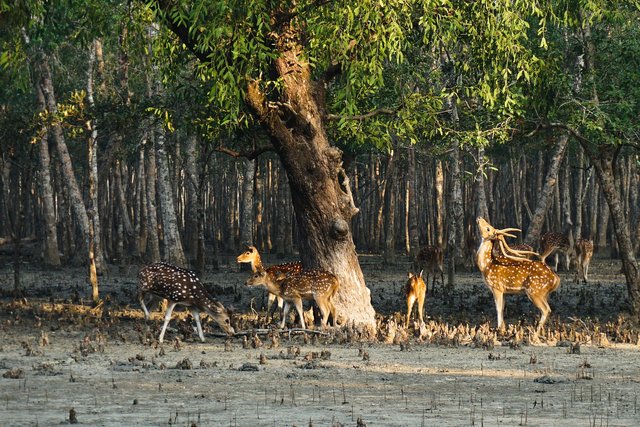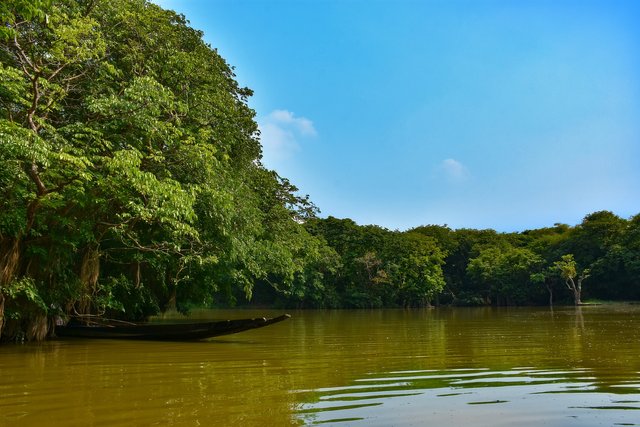The Sundarbans

The Sundarbans, often referred to as the Sundarbans mangrove forest, is a vast forested region located in the delta of the Ganges, Brahmaputra, and Meghna rivers in the Bay of Bengal. It is shared between Bangladesh and India, with the majority of the forest located in Bangladesh and a smaller portion in the Indian state of West Bengal.
The Sundarbans is recognized as the largest mangrove forest in the world, covering an area of approximately 10,000 square kilometers (3,900 square miles). It is a UNESCO World Heritage Site and is renowned for its unique and diverse ecosystem. The name "Sundarbans" means "beautiful forest" in the Bengali language.
The Sundarbans is characterized by its distinctive mangrove trees, which have adapted to survive in the saline waters of the region. These mangroves form a complex network of interlacing roots and are vital for the ecosystem, providing habitat to a wide variety of flora and fauna. The Sundarbans is home to numerous species, including the Royal Bengal tiger, saltwater crocodiles, Indian python, spotted deer, and many types of birds, fish, and reptiles.
The Sundarbans is known for its rich biodiversity and is an important ecological hotspot. It plays a crucial role in maintaining the coastal ecosystem, acting as a natural barrier against storms, tidal surges, and erosion. The mangroves also serve as a breeding ground for various marine and freshwater species.
The Sundarbans has significant cultural and historical value as well. It is the ancestral home of the indigenous people known as the Sundarbans Islanders, who have a deep connection with the forest and rely on its resources for their livelihood. The region has also inspired numerous literary and artistic works, showcasing its beauty and mystique.
Tourism in the Sundarbans mainly revolves around eco-tourism and wildlife exploration. Visitors can embark on boat safaris and cruises to explore the forest, observe wildlife, and experience the unique mangrove ecosystem up close. There are also opportunities for birdwatching, fishing, and exploring the local villages and communities.
It's important to note that visiting the Sundarbans requires proper planning and adherence to safety guidelines, as it is a protected area with a complex network of waterways and dense forests. Local guides and tour operators can help visitors navigate the region safely and responsibly.
The Sundarbans are not only a natural treasure but also face challenges such as climate change, habitat degradation, and human-wildlife conflicts. Efforts are being made by both Bangladesh and India to conserve and sustainably manage the Sundarbans, ensuring their long-term survival and ecological significance.
